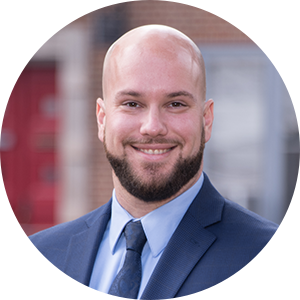As we begin the 2024 fiscal year, marketing and communication leaders might be challenged by campus leadership to cut costs without sacrificing their strategic initiatives (marketing is not an expense, but that’s a topic for another article). When weighing innovative methods to maximize every dollar of your budget, it’s essential to look across your institution to understand how much is being spent on outsourced services, and if any of that work can be brought in-house.
There are many factors to consider when determining what services can be moved from outside to in-house. Let’s walk through five of those key questions below.
1. How much are you spending on outsourced or freelanced services?
According to Simpson Scarborough, most higher-ed marketing departments use freelancers monthly, and freelance support is most often used for graphic design, photography, copywriting and video.
Marketing leaders need to have a clear picture of cross-campus spending on outsourced services when considering what can be brought in-house, or if efforts are being duplicated across campus. In some cases, the amount of money being spent on outsourced services could far exceed the annual salary and benefits of a full-time employee (or more than one).
2. Do you have the right talent, and if not, can you hire the right talent?
Perhaps the most important considerations to take into account are your current staffing structure and the available resources to hire new staff.
It’s important to note that many of the services we are discussing, such as digital marketing, video, writing and graphic design, are not ‘other duties as assigned.’ They are full-time, highly skilled roles that require significant expertise, particularly when talking about large institutional brands and collateral to support that brands.
If you don’t have the right talent presently, or you foresee challenges in securing the resources and support to hire the right talent, it’s unlikely that you’ll be able to bring any of these major services in-house as part of an already existing role. Advocating for more marketing staff amidst enrollment struggles can be difficult, so it’s important to showcase the value, as well as potential cost savings, of opting to hire staff versus outsourcing projects.
3. How are your internal processes structured?
Once your colleagues discover you have in-house videographers, designers, writers or photographers, don’t be surprised if the marketing project requests start to come rolling in faster than before. It’s vital to have protocols in place for marketing project intake and processing and to make sure those protocols are tied directly to institutional priorities, for example, enrollment or fundraising.
Many of the services we are discussing, such as digital marketing, video, writing and graphic design, are not ‘other duties as assigned.’
Ideally, you’ll have support from the top to implement these protocols, but it’s important to communicate to the campus community why these protocols are in place and to offer solutions for other marketing needs, such as a database of design templates, self-service options and lists of preferred third-party vendors by project type.
Additionally, and perhaps most importantly, be sure to involve the campus community in the development of protocols and processes versus simply dictating which projects take precedence. Shared ownership leads to increased cooperation.
4. How will you ensure your team won’t become an in-house agency?
This is an important, but difficult-to-predict, variable. Once you have the right staff, protocols and priorities in place, what is standing between you and your team becoming an in-house marcomm agency?
Multiple factors can come into play here. Do you have support from the president to prioritize certain initiatives or goals? Did you involve the campus in the creation of protocols? Do you have self-service materials or a database of templated material available? Does your team feel empowered to say ‘no’?
Once your colleagues discover you have in-house videographers, designers, writers or photographers, don’t be surprised if the marketing project requests start to come rolling in faster than before.
Often, employees feel the need to say ‘yes’ to every project at the risk of not being seen as team players. As a leader, empower your team to determine which projects will have the most impact on the institution, and above all else, support them when they need to deliver a decision the requesting party was not expecting to hear. Support from above gives employees the confidence to make decisions for the best of the department and institution.
It’s also important to note that simply saying ‘no’ will not get you far. Offer alternative approaches to the requested project to demonstrate that you want to help, maybe just in a different way.
5. Will the transition free up the budget?
When transitioning services in-house, consider additional associated costs, as well as cost savings. You’ll need video equipment, workstations and technology, software licenses and more.
That said, divesting from an agency or heavy reliance on freelancers can free up the operational marketing budget to allow for better equipment, marketing through different channels and an increased professional development budget. Run the numbers.
If it makes sense to only transition something like digital marketing in-house from an agency—for example, by hiring a digital marketing specialist—and not to bring videography in-house, that’s ok. Remember, teams and leaders don’t have unlimited capacity, and a slow transition might be the best approach for you and your team.
Transitioning marketing services in-house from a previously outsourced model can be complex. Use the questions we’ve discussed here as a starting point to determine if it is the best approach for your team, your institution and yourself as a leader.







